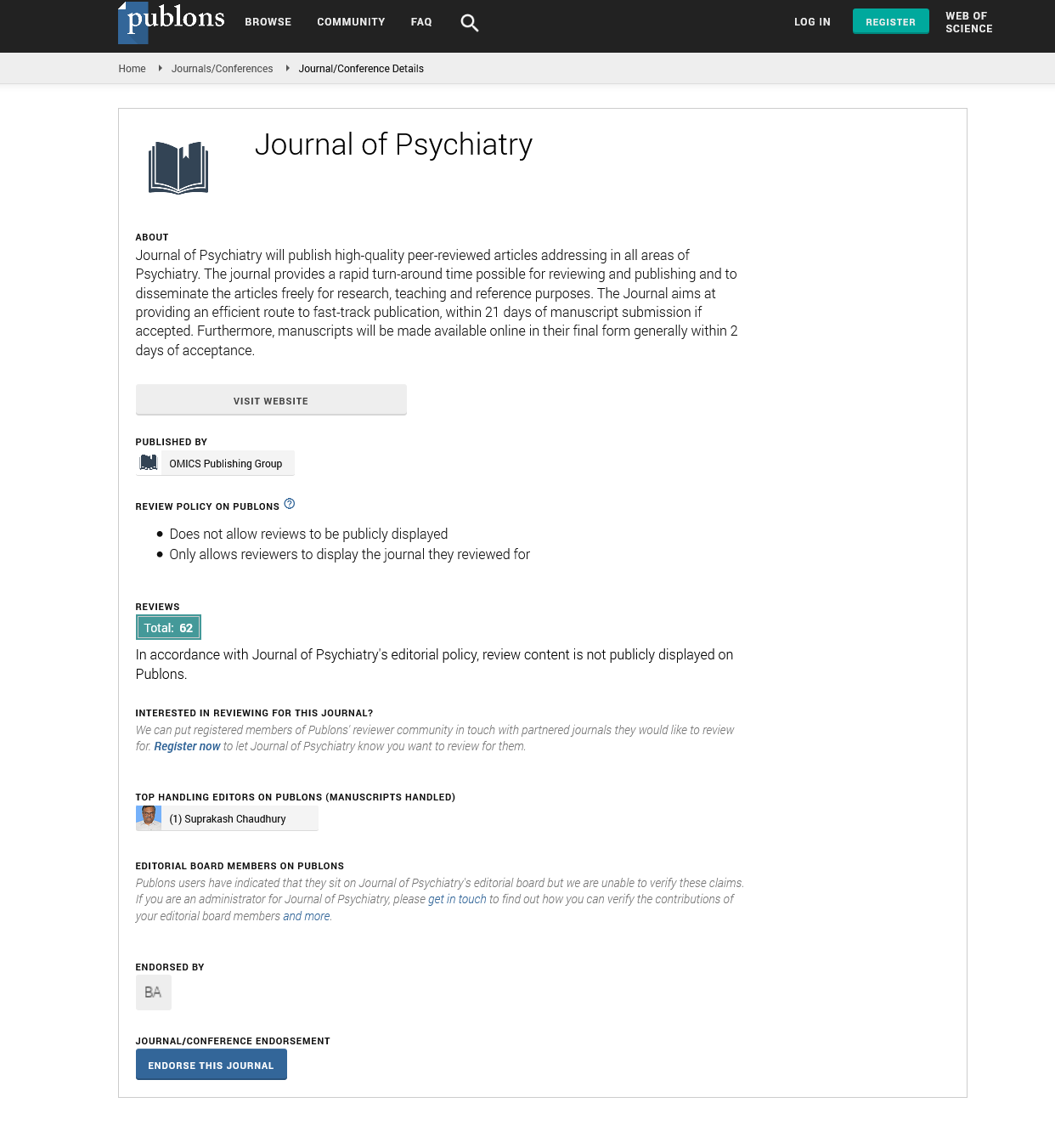Indexed In
- RefSeek
- Hamdard University
- EBSCO A-Z
- OCLC- WorldCat
- SWB online catalog
- Publons
- International committee of medical journals editors (ICMJE)
- Geneva Foundation for Medical Education and Research
Useful Links
Share This Page
Open Access Journals
- Agri and Aquaculture
- Biochemistry
- Bioinformatics & Systems Biology
- Business & Management
- Chemistry
- Clinical Sciences
- Engineering
- Food & Nutrition
- General Science
- Genetics & Molecular Biology
- Immunology & Microbiology
- Medical Sciences
- Neuroscience & Psychology
- Nursing & Health Care
- Pharmaceutical Sciences
Profile and Psychosocial factors associated with suicidal behavior in Guyana
16th World Congress on Psychiatry and Psychological Syndromes
April 24-25, 2017 Las Vegas, USA
Jorge Tomas Balseiro Estevez
Georgetown Public Hospital, Guyana
Scientific Tracks Abstracts: J Psychiatry
Abstract:
Statement of the Problem: The WHO report, published in 2014, gives Guyana in the top worldwide with an age-standardized suicide rate of 44.2 per 100,000 inhabitants. Methodology & Theoretical Orientation: A nationally represented sample of 899 cases involved in suicidal behavior, 555 who committed suicide and another 344 attempted suicides from 2010-2012, were surveyed using an epidemiologic study to identify the psychosocial factors associated. Findings: As results founded most affected in suicide deaths is 20 to 49 years (50%). Males commit suicide more frequently with a ratio of almost 4:1. Most commonly used methods are poisoning (pesticide/herbicide) more than 65% of cases, followed by hanging (>20%). East Indians account for >80%; geographically concentrated in regions 6, 5, 4, 3 and 2. In suicide attempt were collected more detailed information, where age groups more affected are 12-18 (30%) and 19-25 (>20%). Females attempt suicide more frequently (>75%) with a proportion of 3:1. East Indians account for >50% and Afro Guyanese provide 25.9% of cases. Similar geographical area is affected in suicidal attempts and isolated cases are reported from rest of regions. More cases of suicidal attempt were single (60%), without children (68%), living with family (>50%), belong to Hindu (>30%) and Pentecostal (>30%) religions, less common frequent are other factors as low income and unemployed. Persons involved in suicide behavior are related with hopelessness, depression and uncontrollable anger in more than 60% of cases of this study, usually associated to family discord (31%), couple problems (25%), domestic violence (11%) and interpersonal conflict (16%). Other risk factors identified were, acute emotional distress and depression (36.6%), the accessibility of lethal substances (herbicides, pesticides and others) in the 63.7% of cases, alcohol and drug use (32%), family dysfunction (34.5%). Conclusion & Significance: Profile and psychosocial factors associated to suicidal behavior were identified. Implementation of the national suicide prevention plan designed as imperative of the problem.
Biography :
Jorge Tomas Balseiro Estevez is currently working as a Psychiatrist at Georgetown Public Hospital and Professor of University of Guyana. His expertise is in different areas of mental health, especially in psychosocial intervention, programs and plans to improve the mental health and wellbeing. His well-structured diagnosis based in a holistic approach to address individual, community and social psychosocial factors involved in suicide behavior offer new opportunity to develop similar interventions in low income countries.
Email: arif.i.pendi@gmail.com

